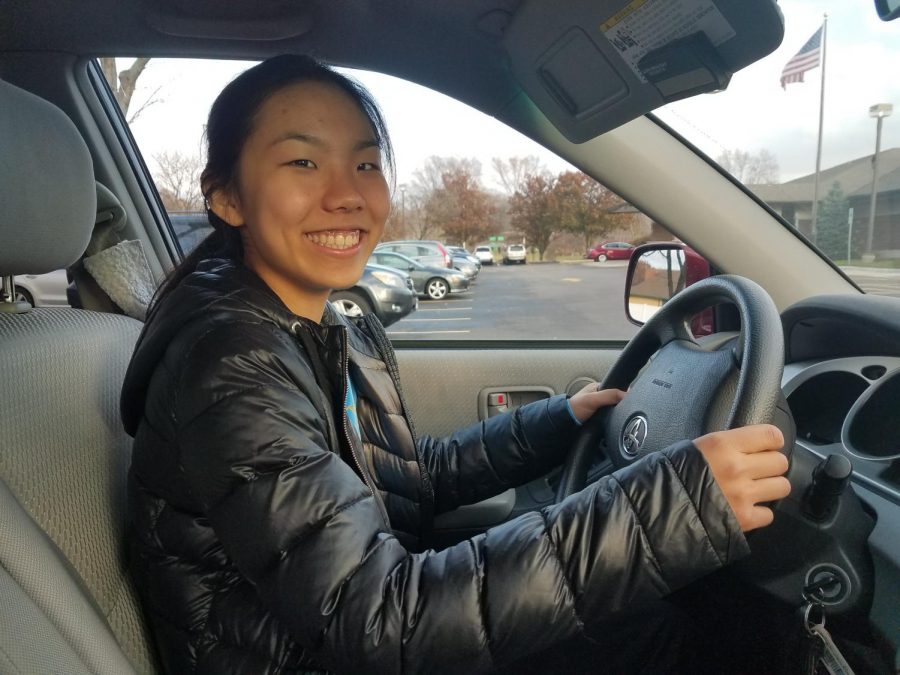Teen driving dilemma: Changing the driving age
Sophomore Sophia Pei practices her driving skills in the Naper Boulevard Library’s parking lot on Nov. 24.
January 16, 2019
Each day, hundreds of Naperville Central students drive to and from school. After all, teens in Illinois can obtain their driver’s license once they turn 16, which makes driving a popular mode of transportation for many students. However, what teen drivers, including those from Central, might not realize is that driving-related accidents are the leading cause of death for American teens.
Vehicle crashes account for a third of all teenage deaths, claiming the lives of six teens per day, according to the Center for Disease Control and Prevention (CDC). As a result, the New York Times reported that around 15 states now forbid teens from driving with another teen, and some states are also tightening the curfew time for teen drivers by making it earlier.
The topic of raising the driving age is frequently debated in state legislatures, but so far the legal licensing age remains the same.
“I think that teenagers should get their license later,” said Jian Jun Pei, father of Central sophomore Sophia Pei. “Older kids are more mature, so they can make better [driving] decisions.”
The Illinois Graduated Driver Licensing Program (GDL) found that almost one in five licensed 16-year-olds is in a traffic crash, and the fatality rate for teens is three to five times higher than it is for adults.
“Driving can be very dangerous,” Pei said. “There are so many distractions on the road, [and] you don’t always know if your child is ready to handle them.”
Distracted driving is the top cause of traffic accidents. Risks such as using cell phones while driving are among the deadliest threats for teens, with a 2015 study by the Department of Motorized Vehicles (DMV) finding that around 42 percent of teens text and drive.
“Students who use their phones while driving is a big issue,” said Central driving instructor Sarah Peterson. “A lot of students are used to going on their phones when someone else is driving, so sometimes those habits stick when they drive. That’s because [driving] can be a completely different experience for some students.”
Currently, Illinois teens must fulfill many requirements to qualify for a driver’s license. The GDL wrote that aspiring drivers have to be enrolled in a driver’s education course and drive for at least 50 hours. Most driving courses also require teens to drive with an instructor for a certain amount of time.
“Reinforcing a proper [driving] education would definitely help students drive safer,” Peterson said. “The driving age shouldn’t necessarily be changed, because driving gives students more exposure and independence.”
For example, getting a license could help students transport themselves for extracurriculars. Central offers dozens of clubs and sports, and many of its students also have jobs.
“I do a lot of activities, so getting my license means that I don’t have to rely on my parents to drive me,” sophomore Natasha Roy said. “I don’t think the driving age should be raised because [driving] makes teens more responsible.”
However, with this responsibility comes a price. As the DMV discovered, the citation rate for 16 to 19 year olds is two times higher than it is for older drivers. Citations, which mainly result from speeding and using the wrong signals, can cause teens to lose their licenses and pay hefty fines.
Nonetheless, driving safety programs, such as the GDL, are working to increase teen road safety.
“Just because some teens are bad drivers doesn’t mean all are,” Roy said. “A lot of teens just want to drive because it gives them freedom and the ability to go wherever they want. For a lot of people, it’s like the first step into adulthood.”







